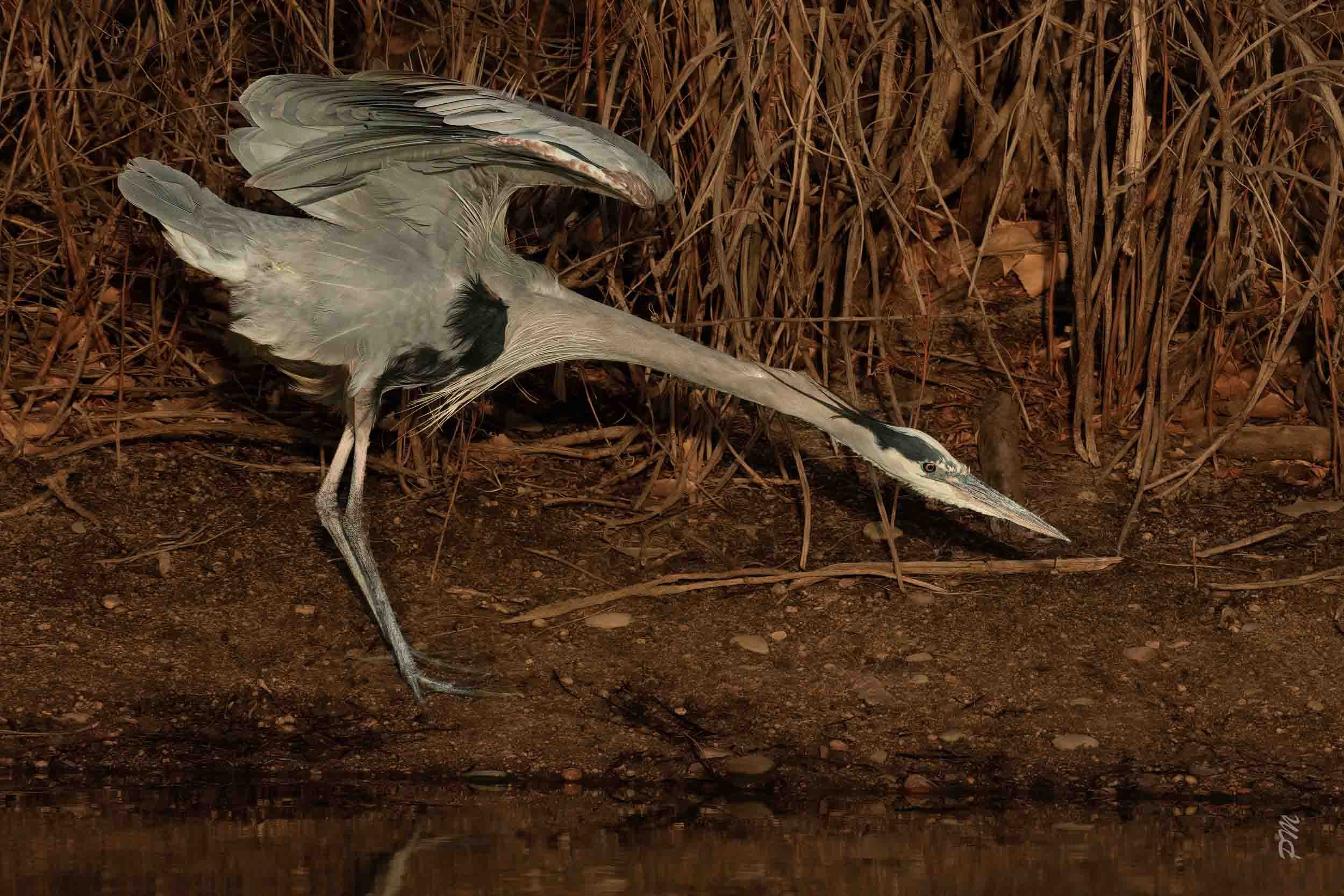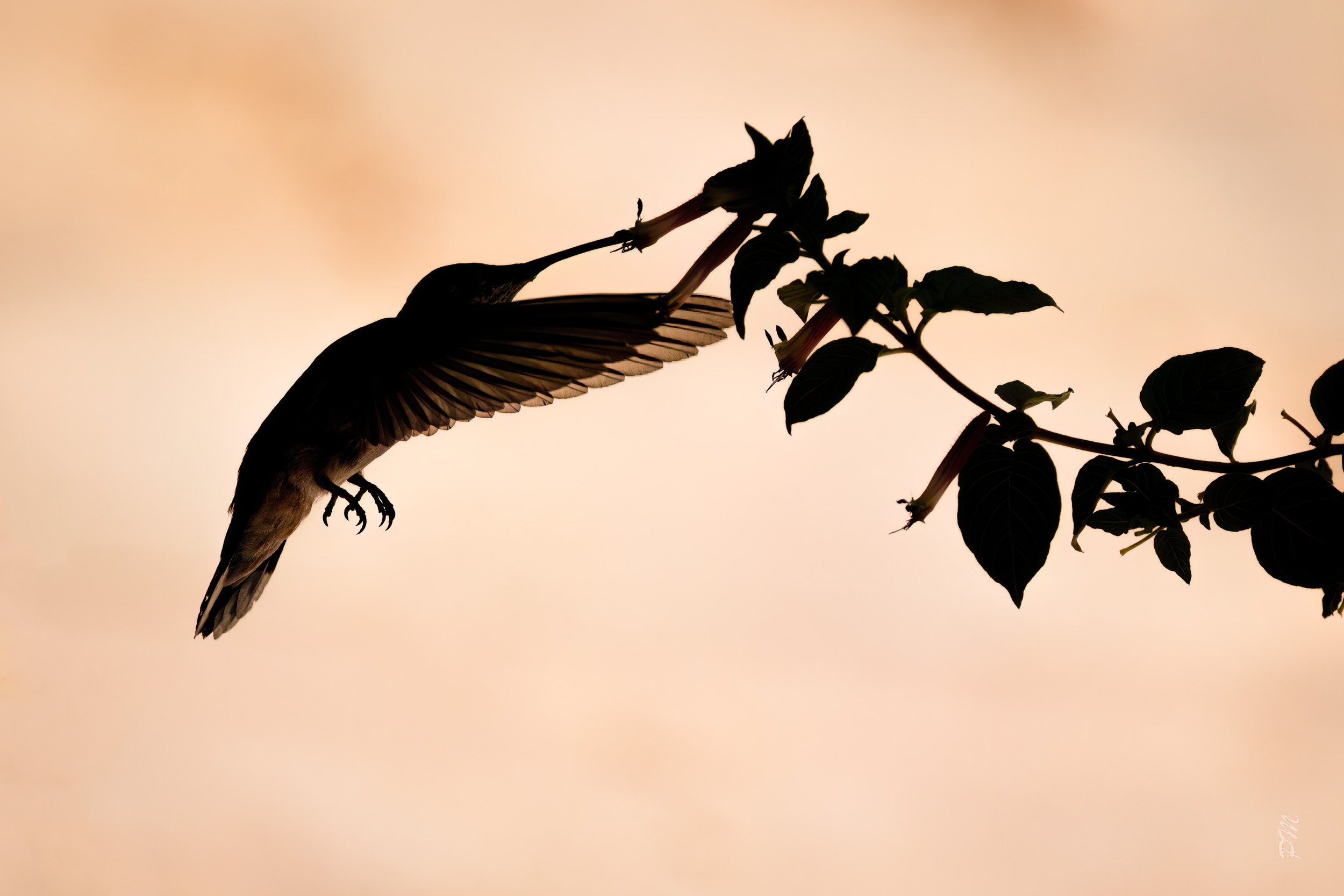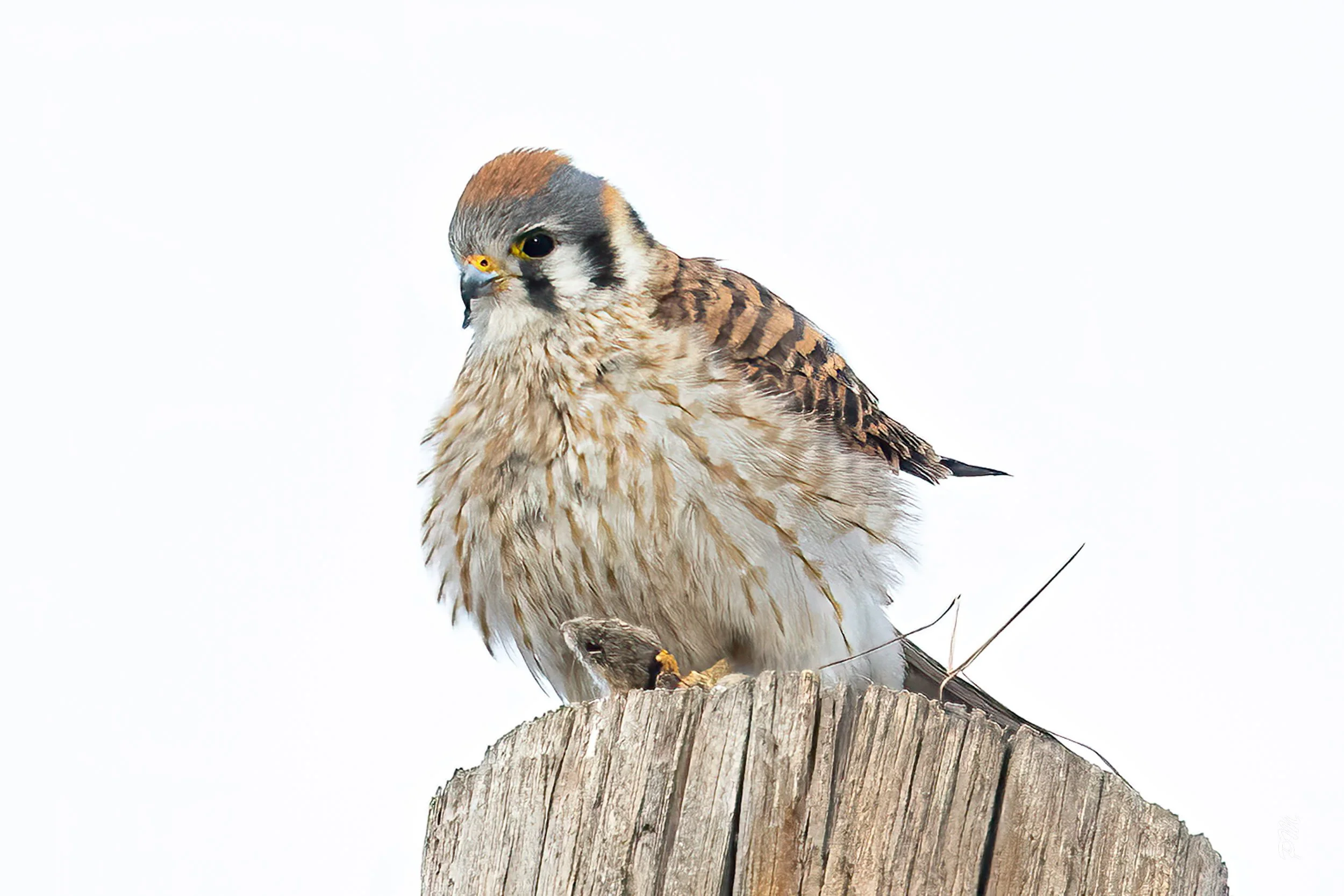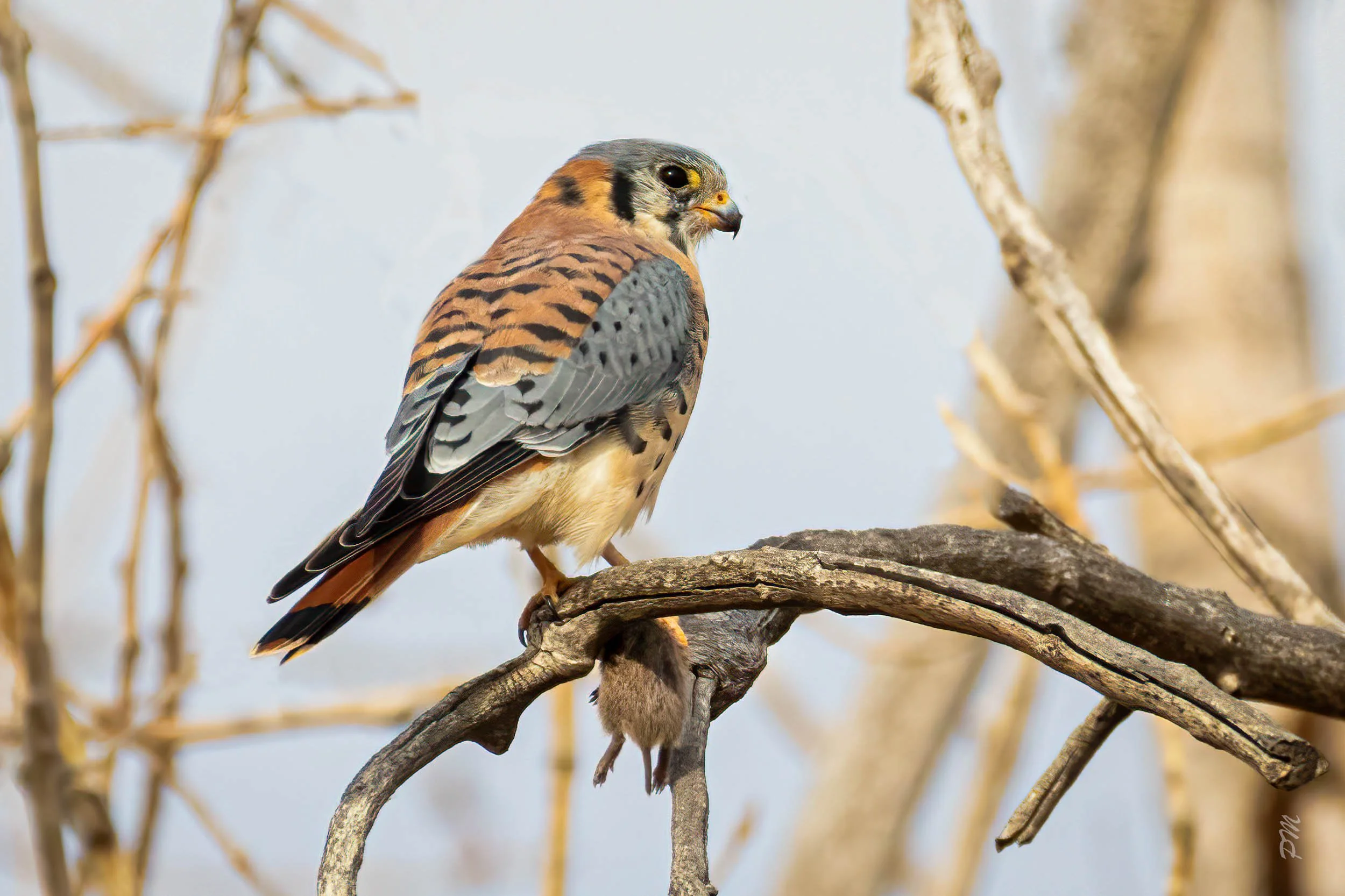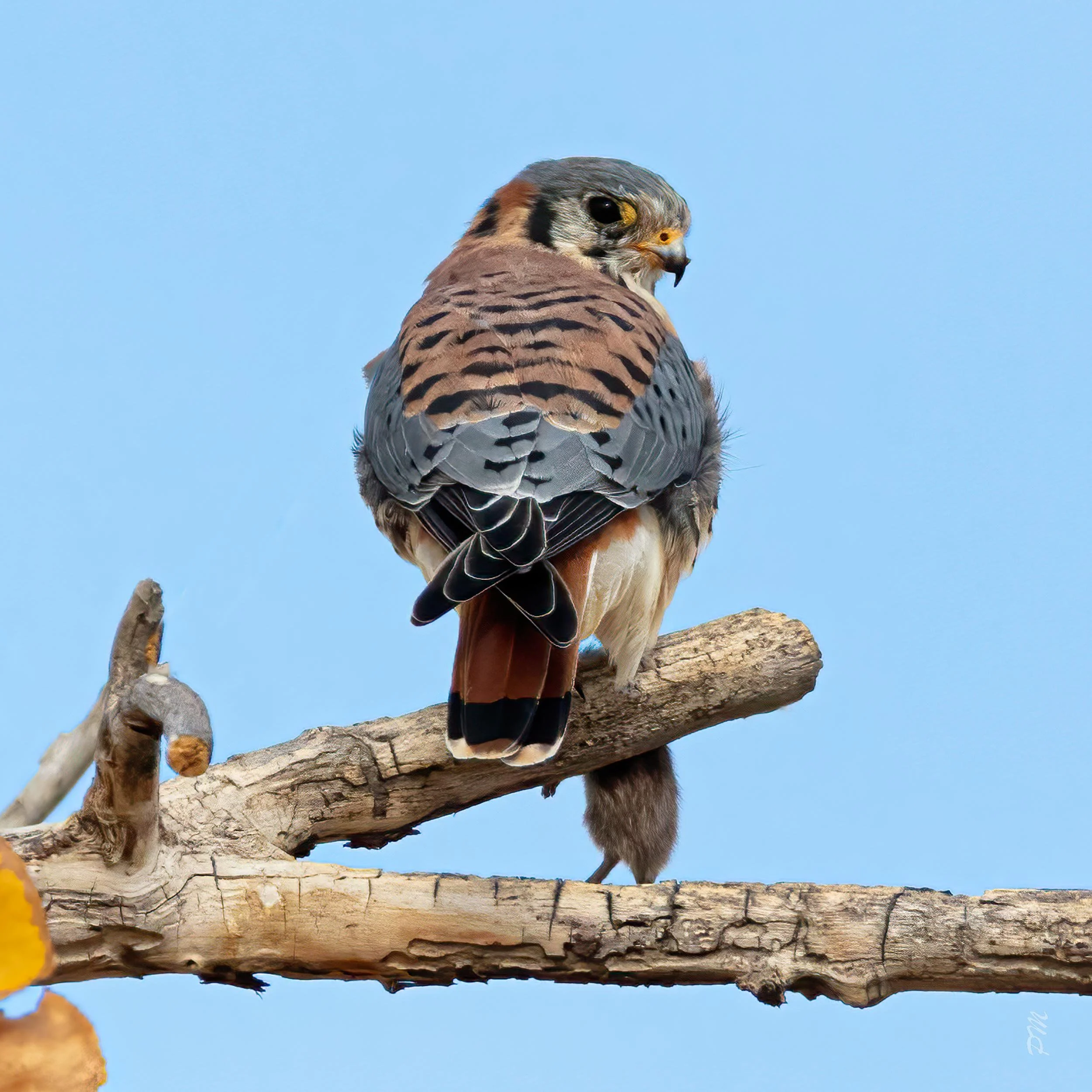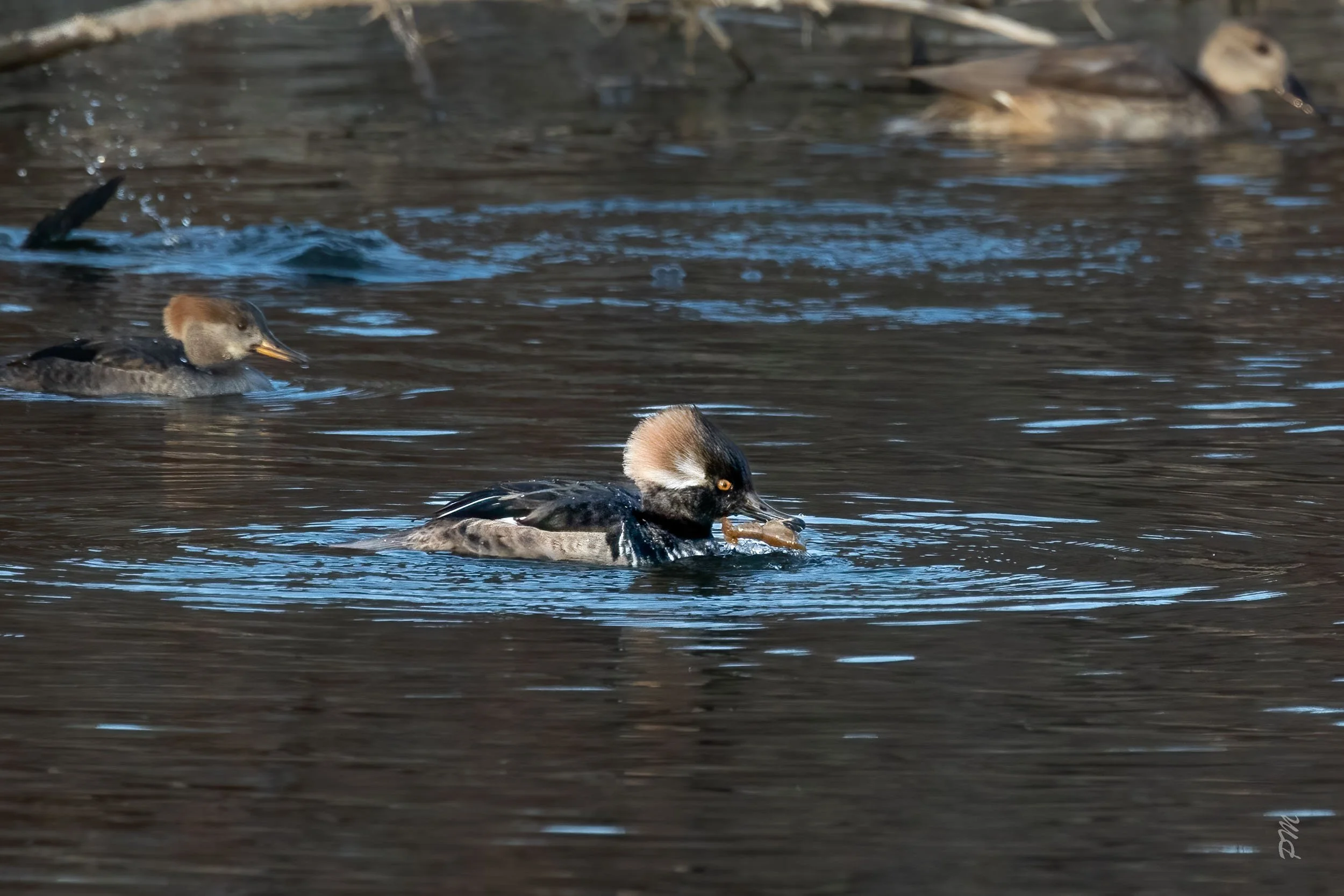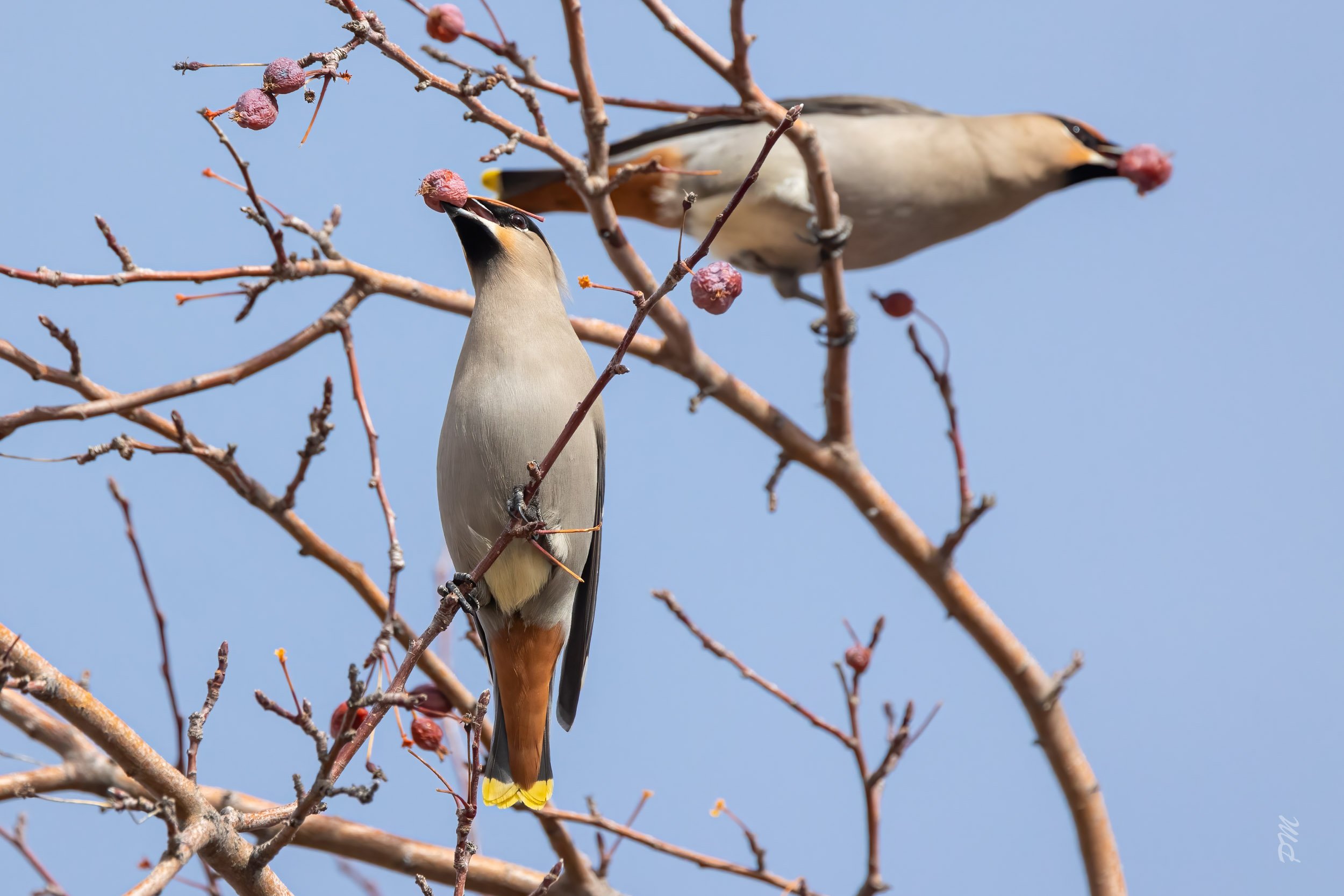Meal Time
One of the bird activities that most fascinates me (and thus draws me to photograph them) is the action of stalking and/or eating a meal. Some are perfectly happy to find insect larvae while others go fishing for the big catch. Whatever the meal it’s always fun to watch how they do it. I highly recommend clicking on any image to view it larger
Herons
Herons, whether the large Great Blue Herons or the penguin-sized Black-Crowned Night Herons, are superb at fishing. Their process is a pleasure to watch.
Below - When a Great Blue Heron sees a fish (or frog for that matter) that it thinks it can catch, it cranes its neck toward the water to get a good look and then instinctively does a math calculation to compensate for the refraction distortion of viewing objects in the water. Much like our car rearview mirrors warn us that objects may be closer than they appear, objects we see in the water aren’t really exactly in the location we see them due to refraction.
Here are more images of a Great Blue Heron enjoying its favorite meal-fish! All three of the images below are from Hudson Gardens in Littleton.
Below - The Black-Crowned Heron similarly stalks its prey like the Great Blue Heron does.
Top Row Below - I watched a Great Blue Heron one day catch a very large fish, probably a carp. It kept it in its beak for a while, then hit it on the rocks to kill it and finally slid it down its throat as you can see with just the tail sticking out.
2nd Row Below - this Great Blue Heron successfully caught minnows and large fish. When Herons catch the fish, it is perpendicular to the Heron’s beak so they have to lift the fish or even toss it in the air to get it parallel to the beak to enable it to slide down its throat. It’s amazing to watch. With small fish it usually only takes seconds but with large fish it can take a long time.
Right (below on mobile) - This Great Blue Heron was in Champion Lake in southeast Texas and caught himself quite the meal!
Egrets
Egrets fish similarly to Herons in that they stalk, calculate, and dig in. They also mostly eat fish but as you can see below they will go after other prey when hungry.
In this sequence below the Snowy Egret first notices a fish in the water, then has to “calculate” the true position of the fish due to refraction distortion, and finally snatch it with its bill. Since obviously there are no hands or utensils to shove the food into its mouth as we do, the Egret flips the small fish in the air and will eventually catch it in its mouth for a quick snack.
Left (below on mobile) - I was surprised to learn that Egrets will eat frogs if they don’t find fish around. This went on for quite a while but it did not end well for the frog.
Upper and Lower Right (below on mobile) - One day I saw a Snowy Egret being buzzed fairly constantly by a Dragonfly. After about the third time the Dragonfly spun around the Egret’s head, the bird simply snatched it out of mid-air and decided to make it a snack.
Left (below on mobile) - This Snowy Egret near the Texas Gulf got itself a nice-sized fish
Hummingbirds
It’s always a joy to watch Hummingbirds attack flowers for their nectar. They see their meal, come close, hover, and appear to “think” about the best way to go about it. And then they dig right in!
Right (below on mobile) - Can you see the hummingbird’s wings hiding behind the flowers in the image?
The little hummingbird on the left (below on mobile) snuck up on me as I was photographing a Snowy Egret at a local park. I heard the hum and noticed it was very close so I wheeled around and quickly took this image.
Here are more examples below
Parental Feeding
After the eggs hatch and before the young ‘uns fledge the nest, parental birds spend a lot of time feeding their offspring. Here are some examples below.
Below - A mini-gallery of Barn Swallow chicks and parents. The chicks will often start screaming when they sense a parent is nearby delivering food.
Right - Spotted Towhee passes a seed on to its offspring
Right - Starling gets “supersized” order to take back to the nest
Below is a variety of smaller birds that are either feeding their young or likely bringing a meal to the nest.
Right - Eagles will fish for their young and deliver it to the nest. This Bald Eagle has been fishing at a nearby lake and is delivering the goods home.
Right - Chickadee passes a seed to its eager offspring
Right - Chipping Sparrow loads up on insects to take back to the nest
Right - Eagles will fish for their young and deliver it to the nest. This Bald Eagle has been fishing at a nearby lake and is delivering the goods home.
Kestrels
Kestrels are small falcons not much bigger than a robin. They generally hunt for rodents of any kind and typically like a last meal before sunset. In all of these images you should be able to notice at least a part of what was once a rodent.
Ducks and Grebes
Below - This is a Pied-Billed Grebe which is technically not a duck but it loves to swim in the water. They catch fish and this very small Pied-Billed Grebe caught a big one. It took a while to get it just right but like Herons and Egrets it maneuvers the fish around until it is parallel with its bill and can slide it down its throat.
Below - This male Wood Duck proudly showed me a crabapple he found.
Below - This Pied-Billed Grebe also dived and caught a nice fish even nice light for me!
Below - This is a Redhead Duck that eats plants it finds when it dives underwater
Mergansers, like these Hooded Mergansers, love crawdads and will sometimes “parade around” with it almost as if to troll other Mergansers nearby. All except the image below are females. The males that breed have the distinctive white patch on its head.
Waxwings
In the winter of 2023 Colorado was graced with its first large flock of Bohemian Waxwings since 2013. But they weren’t exactly omnipresent. They travelled primarily the southern and western suburbs of Denver searching for food sources such as crabapples and dried berries. And they were joined by their slightly more common cousin, the Cedar Waxwing. With their black “masks” they make a striking appearance and in groups their trill calls make an equally striking sound. I was very, very fortunate to literally stumble upon a flock at a small park near my house where I would have never thought they’d be. But they had found two crabapple trees in the park and for the next three days they returned for a few hours each day until they had picked both trees completely clean. They were so focused on getting their reward they would contort their bodies to be successful and when they did they would often toss the crabapple in the air to position it better in its beak. I shot hundreds of images and these are some of my favorites. I hope they don’t wait another ten years to appear again.
All the images to the left and below are either Bohemian Waxwings or Cedar Waxwings. They differ from each other in that the Cedar Waxwings’ bellies are yellow and the underpart of their tails are white while the Bohemian Waxwings’ bellies are gray and the underpart of their tails are cinnamon color. Examples are below but this shot immediately below is one I am particularly proud of.
This was the luckiest of all my luck shots. There was about two minutes of light left when I saw a small group of the Bohemian Waxwings quickly gather next to a puddle for a group drink. It reminded me of closing time at a bar. They drank for only five seconds and then took off for good, refreshed for the night.
Kingfishers
The difference in sex in Belted Kingfishers is easy to tell. The male on the left has a plain white breast while the female on the right has a rust and white-colored breast. This is somewhat unusual in the bird world in that the female is the more colorful of the two sexes. But, hey, both like the same food, generally crawdads or small fish as shown here.

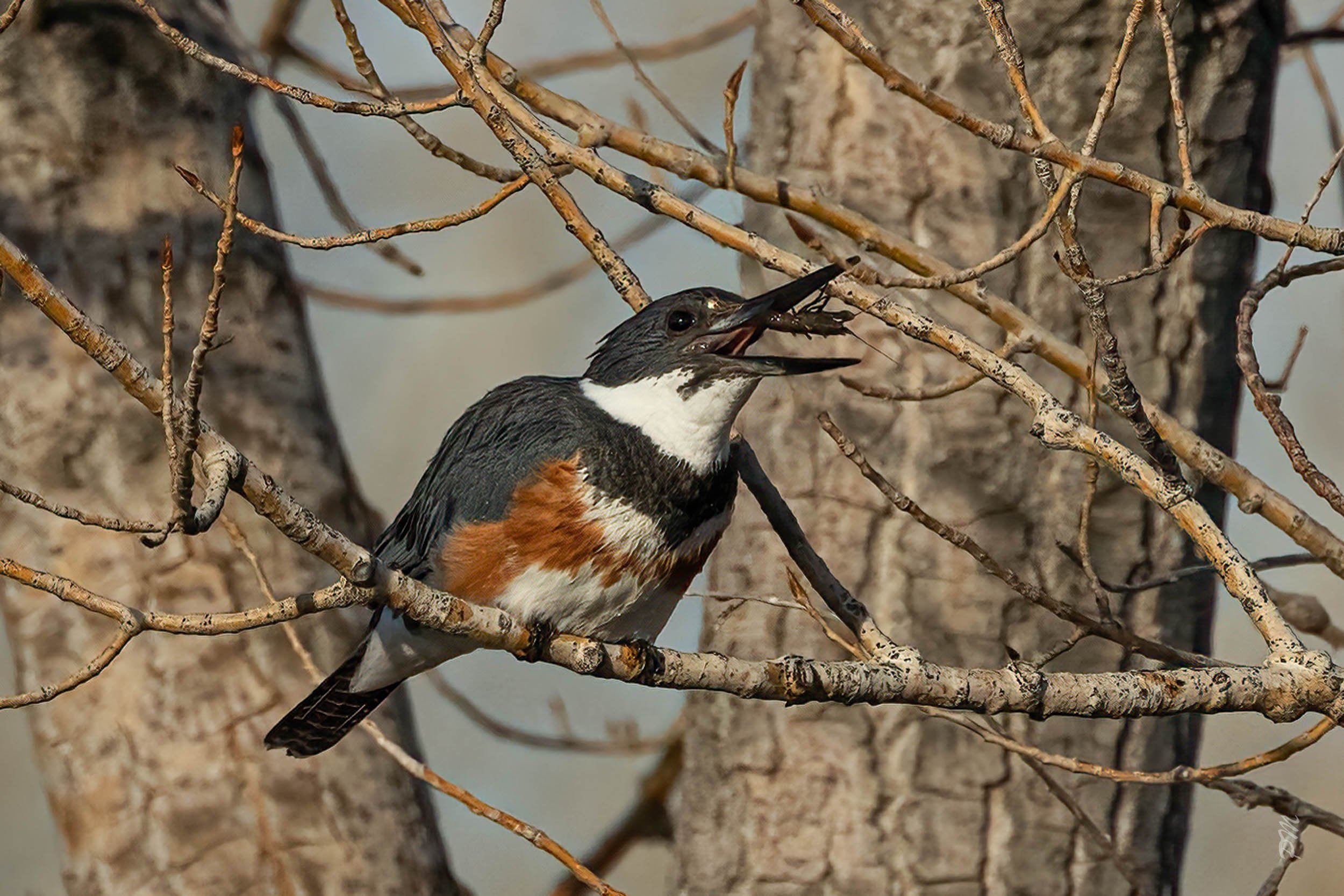

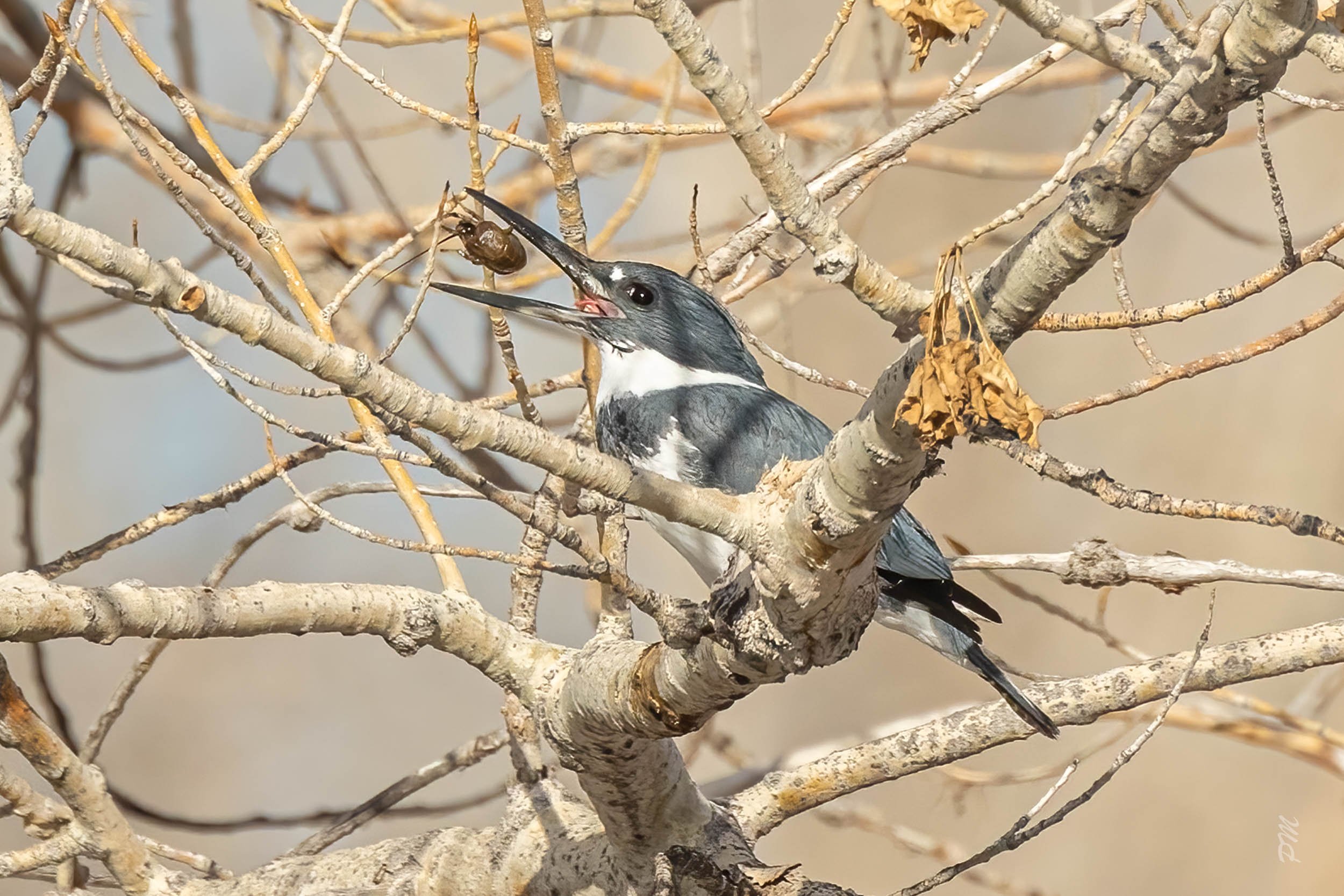

Other Birds
Here is a variety of other birds in the process of getting a meal (or snack).
Two images Below - Yellow-Rumped Warbler hovers in mid-air to catch a barrage of insects.
Below - A bushtit at the feeder on a cold, snowy day
Two images Below - Western Kingbirds love grasshoppers and to get them to slide down their throat they have to flip them up to catch them parallel to their beaks for easy swallowing.
Below - Scrub Jay
Top image Below - Meadowlark with it lunch.
Lower image Below - European Starling with some unrecognizable object that it plans to devour.
Below - Blue Jay with a piece of food in its mouth
Below - This Red-Tailed Hawk had rabbit fur stuck in its beak. Notice the translucent membrane over its eyes. Most birds have this extra membrane to protect their eyes when in flight or eating. Their translucence allows them to still see any potential predators, important in the bird world.
Below - House Finches poke their heads into dried out sunflower looking for seeds in the Fall
Right - Lesser Goldfinch reaches for seeds
Right - This Bald Eagle had caught a fish and brought it to a tree b ranch to munch on
Right - This sparrow grabbed a tuft of seed
Below - A small sparrow has found an even smaller insect for a meal.
Right - Say’s Phoebe with a meal in its bill
Right - This European Starling caught an insect mid-flight

